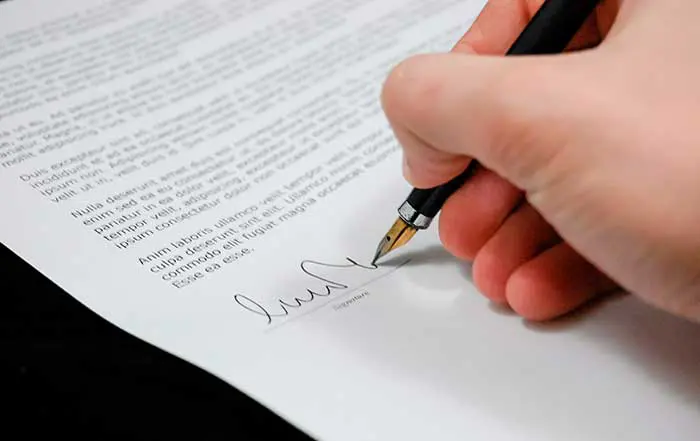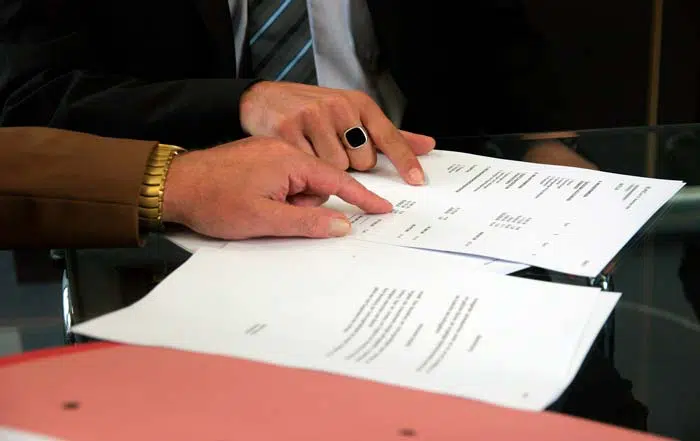Proceedings of the labor inspectorate:
Both the performance prior to the extension of the act of infringement or liquidation, as everything that happens once the Minutes have been notified to the offending employer is regulated by Royal Decree 928/98, of 14 May. Without forgetting the Act regulating the labor inspectorate, Law 42/97, of 14 November.
The minutes of the labor inspectorate are extended if the official has verified that the employer has committed an infraction. The extension of the Act of infraction results in the initiation of the sanctioning procedure.

But it can also happen that the employer affected does not comply with the obligations established by the current legislation or simply obstructs the inspection work, and then, once the facts that give rise to the infraction are established, the corresponding Act of Infringement will be issued, or Of liquidation of quotas, or both in their case.
Notification of Infringement Act:
The infraction Act according to the aforementioned Royal Decree will be notified to the corresponding employer within 10 days from the date stated in the Act, and that we should not confuse with the date of the visit of the inspection, which does not have Even though they should not have a difference of more than 9 months.
The notification will be made by certified mail and the date of receipt will be taken into account to start counting the period for making allegations.
This period is 15 working days, and starts counting from the day after the notification.
This period is one of the important elements to take into account for the validity and effectiveness of the aforementioned Act of infringement, since a defective notification can lead to the annulment of the procedure, the other requirements that must comply with any notification for it Effects:
- Be filed in the period of 10 working days from the date of the act.
- Contain the full text of the act.
- The appeals that may be filed, with the deadlines for their filing, and the Organto which they were to appear.
All these requirements must be fulfilled, otherwise, the notification would not be valid and this based on the Law of Administrative Procedure.
But we cannot use these requirements of bad faith given that the law also provides for these behaviors and establishes that the defective notifications shall take effect from the date on which the interested party perform actions that involve the knowledge of the content of the act, or stand the resource from.
It is also common to refuse the registered letter, but this trick does not give any results because both the law and jurisprudence have been clear in this regard, establishing that by refusing the charter will be notified to all the effects.
Requirements of the content of the Infringement Acts:
But once we have received the certified letter and signed the acknowledgment of receipt when reading the act of infringement or liquidation we must pay attention to the requirements demanded in article 14 of Royal Decree 928/98, of May 14 that speak of the content Of the Minutes and which are:
- Data from the offending party.
- The facts ascertained by the Inspector or Sub-Inspector.
- The offense committed and the article and norm infringed. The proposed sanction, graduation and quantification.
- Organ competent to resolve, term for filing claims. As well as the name and signature of the officer that raises the Act and the date of the same.
If the Act of infringement not meets these requirements, will draw the allegations in the error committed by the Administration, although almost all these errors are correctable.
However, there is a requirement that can not be remedied unless a new Inspector action is performed and is a requirement of the facts proven by the Inspector and the means used to carry out such verification.
Presumption of Certainty of the Minutes of the Labor Inspection:
The Law and the Regulations say that the facts found by the official enjoy a presumption of certainty, so that they can not be opposed to mere statements, since it must be evidence and undoubted evidence as jurisprudence.
However, the question that needs to be clarified is whether legally established offenses are sufficiently proven and proven.
As for example would be the case with a simulation of the employment relationship and the collusion that imply a concert of wills, company and worker, hardly verifiable through a direct and full proof of the commission of the infringement, since there is to inquire into the subjective causes belonging to the internal forum of the people.
That is why we have to ask ourselves about the legal feasibility of proof of presumptions or indiciaria, under which it is true to say, through a few objective facts tested and according to the rules of the human criterion, on the existence of an infringement as is the collusion or simulation of a labor relationship.
With regard to this question, articles 385 and 386 of the Civil Proceedings Act supports as a means of testing the assumptions, and not only the legal, provided that among the fact demonstrated and that it is deduced there is a precise and direct link, according to the rules of the human criterion.
The Constitutional court has determined that this convincing way does not damage the right to the innocence presumption invoked, in its Edict 7/1989 of January 13.
And the Supreme Court of the Contentious-Administrative Court, admitted this constitutionality, in Judgment of October 18, 1988 has indicated that the collusion is characterized by the concurrence of an agreement of wills and usually disguised as a certain semblance of legality under Which conceals the true intention of those who act.
From the aforementioned judgment it is clear that the purpose of the foregoing is to highlight the difficulty of the administration in most cases to obtain direct evidence of the commission of these infringements. It being reasonable to understand if we want to avoid situations of impunity, that sufficient evidence or presumptions are sufficient whenever it is based on proven facts as established in article 386 of the LEC.
Contents of the Infringement Acts:
The third issue that arises is the content of the Act of infringement and that is in contraposition with the previous one of the test and in favor of the administered one.
With regard to it, the facts of which we spoke in previous paragraphs may be reflected in the Act of infringement in a very different way.
Thus, for example, an account of facts can be limited to saying that “a man rendered his services for a company and that therefore it is verified that he is worker of that company”, is not the same as saying “a man who was behind Of the bar, serving drinks or charging customers, and with the uniform of the company is verified.
Therefore, the first affirmation does not expire with the requisites of content of the Record of infraction and yes the second one.
The difference is that in the second, it is clear why this conclusion is reached, and it is what in law we call motivation.
And that is neither more nor less than the specification and clarification of the application of the law to the specific case concerned in each situation and that is one of the elements necessary to comply with the content of the act of infringement.
Therefore in conclusion, on any act of infringement of labor we must take into account the following three points:
- The notification has to be carried out correctly.
- The content of the act of infringement must be adjusted and clarified to the specific case and
- That the facts proven by the Administration are sufficient in the sense explained.
In addition to all this, in any case if evidence against the Act supporting the opposite without saying it has relevance in allegations that managed to carry out.





